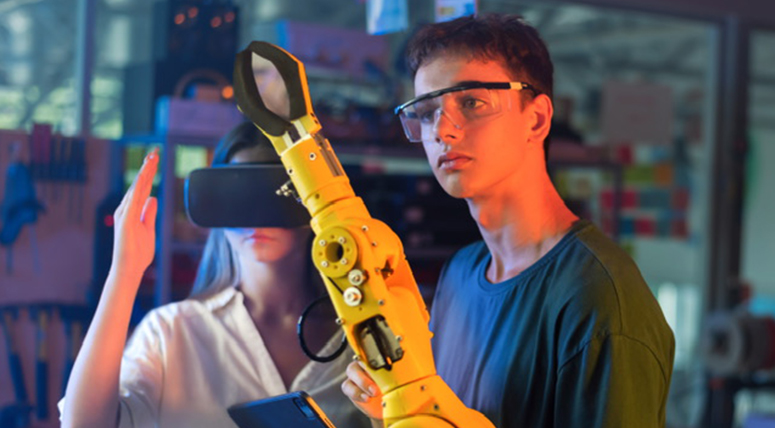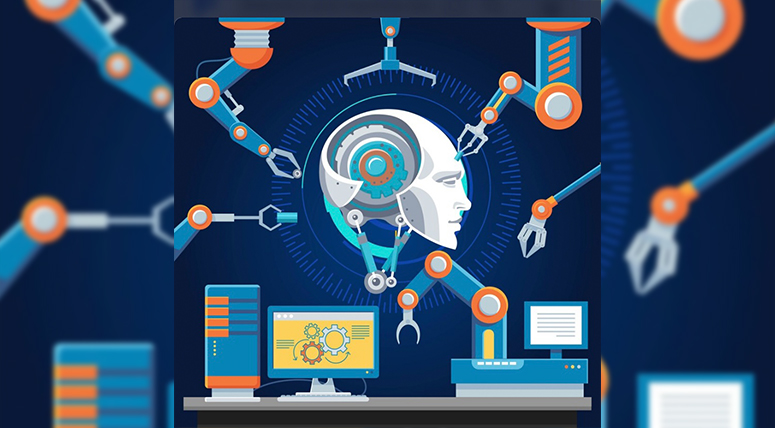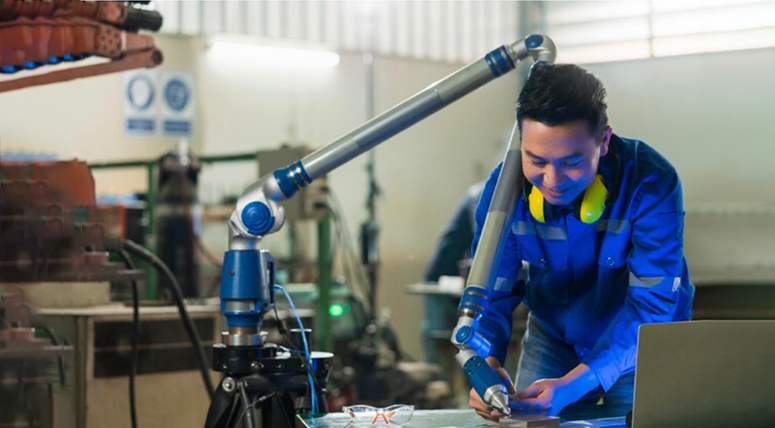Machine Learning and Robotics: Match Made in Heaven
21 Nov 2023
Cognizance in Mechanics: The Intersection of Machine Learning and Robotic
At present, two of the swiftly progressing technological fields are Machine Learning (ML) and Robotics. Machine Learning, categorized within the realm of Artificial Intelligence (AI), bestows upon computers the capacity to independently gain knowledge without the necessity of explicit programming. In contrast, robotics, functioning as an engineering discipline, is centered on the creation, maintenance, application, and hands-on deployment of robots. This facilitates the enhancement of software applications' predictive accuracy without the need for explicit programming. To predict new output values, machine learning algorithms leverage historical data as their input. The realm of robotics focuses on crafting, maintaining, using, and employing robots, which are programmable devices capable of performing a wide array of tasks automatically and often with exceptional precision. Robotics and Machine Learning are closely interconnected fields. The two fields of robotics and machine learning work in harmony. Robots can give ML algorithms with the data they need to learn and improve, while ML algorithms may be utilized to enhance the performance and capabilities of robots.

In this blog post, we will explore the convoluted relationship between both these fields and how they synchronize together to promote the creation of automated and intelligent technologies. Many educational institutions have recognized the importance of this rising demand. One such establishment is Manav Rachna University which offers B.Tech Program with specialization in Robotics and machine Learning.
The B.Tech degree in Robotics and Machine Learning at Manav Rachna University equips learners with the expertise and understanding necessary to create autonomous machines that maximize the possibilities of machine learning. The curriculum offers an in-depth course of study in the latest technological advances. Machines that are adaptive and self-sufficient are the result of this. Our alumni are adequately prepared to thrive in the rapidly developing areas of robotics and computational intelligence as we place a strong focus on experiential instruction and real-world applications.
Enhancing Effectiveness with Machine Learning Algorithms
Robot productiveness can be improved by implementing algorithms based on machine learning in a number of ways, such as:
- Perception:Robots can be taught to recognize items and people in their environment and to follow their movements using machine learning (ML) techniques. For robots to be able to safely travel and interact with their surroundings, this is necessary.
- Control:Robots' control can be enhanced with ML algorithms to make them more nimble and precise. This is crucial for robots that must carry out difficult jobs, including constructing things or carrying out surgery.
- Planning:Robots can employ ML algorithms to aid in their action planning. This is crucial for robots operating in dynamic contexts because they must be flexible enough to adjust to environmental changes.

Machine Learning: Fueling the Robotic Revolution
Below are a few concrete illustrations of how machine learning is presently employed in robotics:
- Autonomous Vehicles: Machine learning algorithms play a pivotal role in training self-driving cars to identify objects and individuals on the road and make safe travel decisions
- Industrial Robots: ML algorithms are used to program industrial robots to complete challenging tasks like assembling products or welding components.
- Surgical Robots:ML algorithms are utilized to increase the surgical robots' accuracy and precision.
- Personal Robots: Personal robots are programmed to understand and carry out their owners' requests, as well as to gradually learn their preferences, using ML algorithms.
ML is also being used to develop new types of robots, such as:
- Swarm robots: Swarm robots are collections of small, straightforward robots that cooperate to accomplish shared objectives. Swarm robots may be controlled to behave in complex situations using ML algorithms.
- Soft Robots: Soft robots are fabricated using flexible materials like silicone and rubber, granting them the capacity for movements that surpass those achievable by conventional robots, thanks to the incorporation of machine learning (ML) techniques.
Transforming Sectors: The Synergy of Machine Learning and Robotics
Getting a specialization in a Machine Learning and Robotics Course can be extremely beneficial for the younger generations as we are turning towards technological advances constantly. The convergence of Machine Learning and Robotics is making a substantial impact on numerous sectors, including:
- Manufacturing: Robots driven by ML are being utilized in factories to automate operations, boosting productivity and efficiency.
- Healthcare: Robots driven by ML are being used to help with operations, therapy, and other healthcare duties.
- Logistics: To increase efficiency and cut costs, robots powered by ML are automating operations in warehouses and distribution facilities.
- Retail: Robots driven by ML are being utilized to automate operations like picking orders and stocking shelves in stores.
- Agriculture: Robots driven by machine learning are being utilized to automate operations like crop harvesting and field wedding.
ML and Robots have a highly promising future. With the ongoing advancement of machine learning algorithms, it is foreseeable that upcoming robotic systems will demonstrate significantly increased innovation and complexity. These advanced robots will showcase improved effectiveness and independence in carrying out a wider range of tasks, resulting in a significant shift in how we live our lives and manage our professional activities.

Potential Impact of ML and Robotics on Society
Robotics and Machine Learning Programs possess the potential to exert a substantial influence on society, encompassing both favorable and adverse aspects. On the beneficial side, ML-driven robots hold the capacity to aid us in addressing critical global challenges, such as poverty and climate change. For example, ML-powered robots can be employed to mechanize labor in developing countries and enhance the creation of efficient renewable energy resources.
On the downside, there is a chance that ML-driven robots will cause widespread unemployment and civil upheaval. For instance, if ML-powered robots can automate the majority of jobs, a lot of people will be unneeded in the workforce. Political instability and societal unrest may result from this.

Prior to the widespread adoption of these technologies, it is crucial to carefully analyze the potential effects that machine learning and robots may have on society. It is imperative to guarantee a fair distribution of the benefits brought by ML and robotics while simultaneously minimizing the associated risks.
Benefits of using ML in Robotics
There are several benefits to using ML in robotics, including:
- ML algorithms can help robots accomplish jobs more precisely, efficiently, and intelligently. This leads to improved performance and capabilities.
- Robots that use ML algorithms can become more independent, which means they can carry out tasks without human assistance.
- Cost savings: The development and deployment of robots can be made more affordable with the aid of ML algorithms.
- New uses: ML algorithms can make it possible for robots to be used in new ways, such as autonomous vehicles and surgical robots.
Future of ML and Robotics
Robotics and machine learning have very bright futures. ML algorithms are being used in a greater variety of applications and are getting more effective and powerful. This is enabling the creation of increasingly intelligent, autonomous robots that can carry out previously impractical jobs.

Conclusion
Robotics and Machine Learning work together powerfully to transform a variety of businesses and facets of our life. Before using ML and Robotics on a broad scale, it is crucial to thoroughly analyze the potential effects on society. We must ensure that the advantages of ML and Robotics are equitably distributed and that the hazards are reduced. In general, machine learning (ML) is a powerful tool with versatile applications for improving the capabilities of robots. As Machine Learning algorithms continue to progress, we can expect future robots to become significantly more innovative and sophisticated.
Admissions Open for Session 2024-25
ALSO READ: B.Tech Robotics & Artificial Intelligence Engineering: Charting Career Success with Innovation
Author: Dr. Shalu, Assistant Professor, Department of CST, MRU







